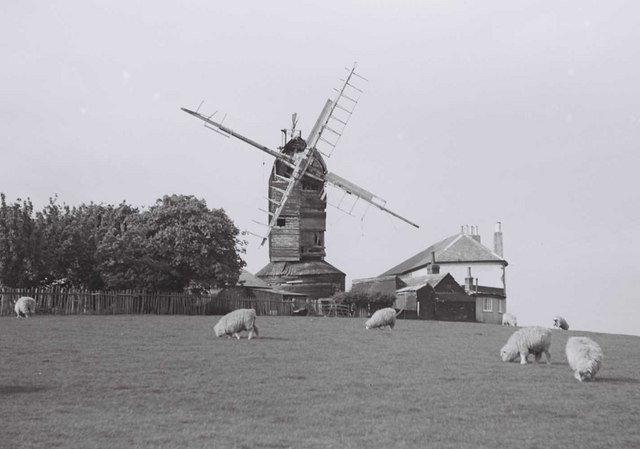Location
Location: Hog Hill Studio, Rye, UK
Timeline
Interview Jan 20, 1985 • Paul McCartney interview for The Magazine
Article Feb 10, 1985 • Broad Street Video Competition
Article March - April 1985 • Completion of Hog Hill Mill home studio
Session March - May 1985 • "Press To Play" sessions #1
Article Mar 05, 1985 • "Rupert And The Frog Song" gets a BAFTA award for the Best Short Animated Film
Paul McCartney spent quite some time at AIR Studios, George Martin’s owned studios, to record his 1980 albums. But at some point, he felt he wanted to have his personal home studio. By March / April 1985, Hog Hill Mill studio was ready for recording; and was immediately used to start recording “Press To Play“.
In 1981, Paul had acquired Hogg Hill Mill, an eighteenth-century windmill, sit in the small village of Icklesham, Sussex, as an extension of his Peasmarsh property. Worth noting that the original name is “Hogg Hill Mill“, while the studio name is “Hog Hill Mill“. Why the difference? A mystery.
From Wikipedia:
Hogg Hill Mill is a post mill at Icklesham, Sussex, England which has been restored. Hogg Hill Mill was built in Pett in 1781 and moved to Icklesham in 1790. It was working by wind until 1920 when it was stopped owing to a weak weather beam. Today, the recording studios of Sir Paul McCartney are to be found at the mill.
Hogg Hill Mill is a post mill on a two-storey roundhouse. It has four spring sails carried on a cast-iron wind shaft and is winded by a roof-mounted fantail, one of only two surviving post mills in England with this feature, and the only one where this can still be seen. The mill drove two pairs of millstones, arranged head and tail. The brake wheel has been removed, but the wooden tail wheel is of clasp arm construction.
Which albums did you spend the most time making?
I think Tug of War from 1980-82, and then Pipes of Peace. I was working with George Martin at the AIR London and Montserrat studios. We took a lot of time on those two albums. In fact, we took so much time when I saw the bill for it all though. “I could have made an entire studio for this!” And that’s, in fact, why I’ve since made my own new studio.
Paul McCartney – From Press interview with Musician – February 1988



[…] The post mill is on a two-storey roundhouse with four spring sails carries on a cast iron windshaft. Another interesting feature is its roof mounted fantail, one of only two surviving post mills in England with this feature, and the only one where this can still be seen.
First built in 1781 in nearby Pett, it was moved to Icklesham nine years later in 1790. It was in the prominent position where it functioned for 130 years until it eventually went out of action in 1920.
Now the old set up of grinding millstones has been converted for use as a recording studio. This isn’t Icklesham’s only claim to fame, as it has also played a fascinating role throughout history. […]


